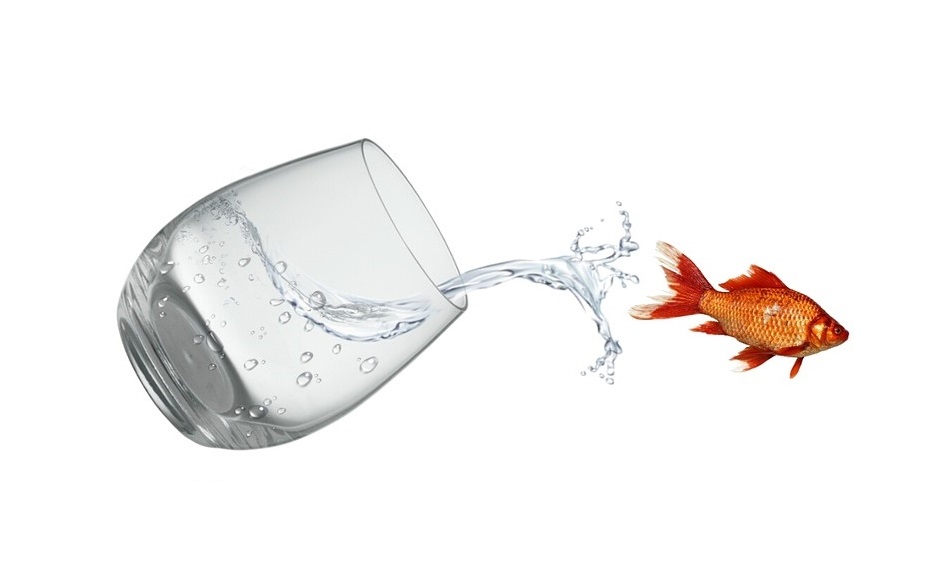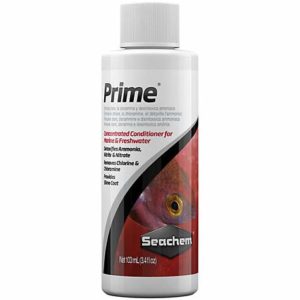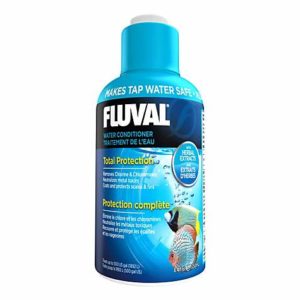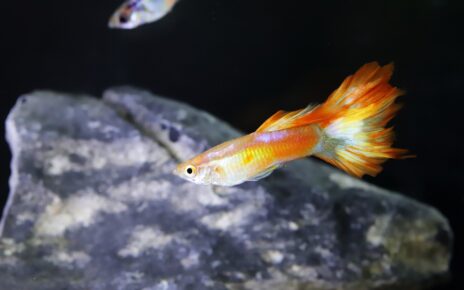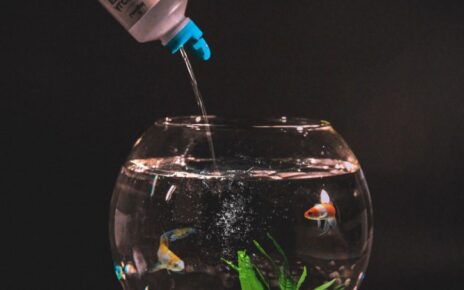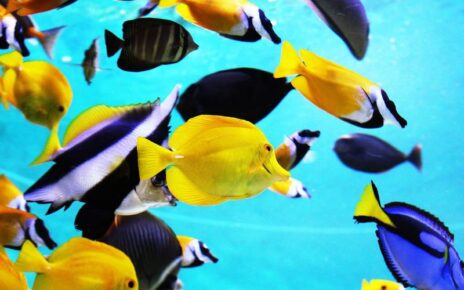Since most public water is treated with chlorine or chloramines. It is important to remove these chemicals for the safety of your fish. Not only can chlorine harm your fish, it will also kill off any beneficial bacteria in your fish tank. Once the beneficial bacteria are dead the ammonia levels will start to rise. And if the chlorine hasn’t already done irreparable harm to your fish, the ammonia will only make things worse.
Symptoms of Chlorine Poisoning in Fish
One of the first symptoms of chlorine poising will be the fish swimming erratically. The fish will also float near the water surface as they struggle to breathe. The reason this occurs is that the chlorine actually chemically burns their gills, which limits their ability to absorb oxygen from the water.
The second symptom of chlorine poising that can occur to a fish is damage to their skin. First red marks will begin to appear on their body, these red marks are lesions caused by chemical burns. These burns will also stimulate the fishes skin to protect itself, causing the fish to excrete abnormal amounts of mucus. This may be very noticeable since the fish will be covered in a thick coat of slime.
All of these symptoms are actually signs of acute damage. and in most cases they are irreparable. So in order to avoid these issues, it’s very important to remove any chlorine from the water before introducing it into your fish tank.
Types Of Chlorine
Before learning more about how to remove chlorine from your water. It can be helpful to know a little bit more about the different kinds of chlorine found in public water supplies.
Chlorine
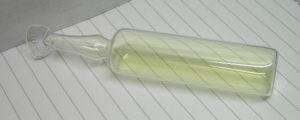
Chlorine is a chemical element that is a yellow-green gas at room temperature. It became one of the primary water disinfectants in the 20th century. Due primarily to the fact that it is a very powerful oxidizer. Chlorine is usually added to municipal water at local treatment plants. This is done by dissolving the gas at a high enough concentration to kill any pathogens that may be present.
This method of water treatment was the most commonly used method, until recently when most water treatment plants switched over to using chloramines. The reason for the switch was due to the volatility of the chlorine gas.
Water treatment facilities were actually losing a large amount of chlorine due to out gassing. This cost them extra money. And they were not able to guarantee that the chlorine levels in the water were concentrated enough for it to be safe to drink.
The volatility of chlorine was actually a benefit for fish keepers since it made it very simple to remove chlorine from treated tap water. All you had to do was let the water sit out, and the chlorine would slowly escape into the atmosphere. While it still might be possible to remove chlorine from water in this way. You should always assume chloramines are being used just to be safe.
Chloramine

The use of chloramine to treat municipal water supplies is becoming the most common method of disinfection currently in use. Chloramines are a chemical compound created by combining ammonia with chlorine.
The main benefit of using chloramine for water treatment is its stability once it’s dissolved in water. Unlike chlorine, chloramine will remain in solution even if the water is exposed to the atmosphere. Because of this water treatment plants can save money. And they can be sure that all their customers get properly disinfected water.
The problem chloramines present to fish keepers is that they are not as easily removed as chlorine. Since chloramines will not readily evaporate into the atmosphere, it is necessary to use chemical methods to properly remove chloramine from treated water.
Besides the chlorine in chloramine, you will also have ammonia to deal with. The way most chemical water conditioners handle chloramine is to neutralize the ammonia, by converting it into it’s ionized form NH4+.
Chlorine or Chloramine in Your Water?
If you want to know if your water has chlorine or chloramine in it, your best course of action is to call your local water company and ask. The information about the chemicals added to your water is required by law to be made publicly available.
If your interested in trying to find out on your own if your water has been treated with chloramine. There are ways you can try but they might not be that accurate. One method is to test your water for the presence of ammonia.
Since chloramine contains ammonia an ammonia test should come up positive if your water has chloramines in it. Testing this way might have false positives or even false negatives. A false positive may occur if there is any ammonia contamination in your water. To be safe either assume chloramine was added to your water. Or get a complete water test done by a professional water testing company.
How to Remove Chlorine from Water
Chemical Water Conditioners
Using a chemical water conditioner specifically designed to remove chlorine and chloramine is relatively easy. The first thing to be sure of is that the water conditioner you plan on using can remove chloramine.
Any good water conditioner that removes chloramine will also have the ability to remove other toxic substances like heavy metals. But the primary focus here will be the removal of chlorine and chloramine.
To properly use a chemical water conditioner you should carefully follow the directions listed on the bottle. One reason why there is no set amount of water conditioner to use is due to the fact that some water conditioners are more concentrated than others. For this reason, using only the recommended amount of each product is the best way to go. While most water conditioners are relatively safe. They can be overused and may even foul your fish tank and the filter if used improperly.
A water conditioner that can remove chlorine and chloramines can be used when starting a new tank. Or when adding water to an already established fish tank. When setting up a new tank adding water conditioner directly to the water int the tank is a safe way to go.
Otherwise when adding water conditioner to a fish tank that is already established. The best thing to do is mix the water conditioner and the water in a separate container. So you can be sure the water is fully dechlorinated.
How to Remove Chlorine from Water Naturally

If you are looking for a more natural way to remove chlorine from municipal water, you can use vitamin C. Vitamin C (Ascorbic acid) is very effective at removing both chlorine and chloramines from water.
And while some people might be worried that Vitamin C is an acid and that it could alter your fish tanks pH, this is not a major concern. Any drops in pH are very short-lived, and might not even be detectable when Vitamin C is used at the recommended levels to remove chlorine.
The recommended concentration of vitamin C to neutralize chlorine and chloramine is 4 P.P.M. To achieve this concentration of vitamin C you will have to add 40mg of Vitamin C per gallon of water. If you are adding Vitamin C to an established tank, it’s a good idea to mix the Vitamin C and water in a separate container then add it to the tank.
If you want to use Vitamin C but don’t want to do the measurements yourself there is a commercial solution that you can try.
ATM Paradigm All Natural Vitamin C Water Conditioner for Aquariums, 16 fl. oz
Evaporate Chlorine
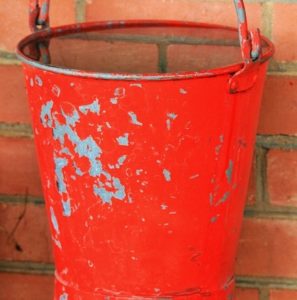
If you are completely sure your water is only treated with chlorine, you can still use the old evaporation technique. For this method to work you should leave the water out in a container. And make sure that the container allows as much of the surface of the water to be exposed to the air.
Good containers for this method are buckets, pots and any other vessel that has a very large opening. The water should be allowed to sit for at least 24 hours, or longer depending on the chlorine concentration. After the water stops showing signs of little bubbles forming it should be safe for use.
While this method might still work, it is not really advised anymore. It might even be a good idea to use a water conditioner after using this method just to be on the safe side.
Water Conditioner Reviews
API Tap Water Conditioner Review

The API Tap Water Conditioner is specifically designed to remove chlorine and detoxify heavy metals. It does not have any other added chemicals to remove ammonia or nitrites. This water conditioner is perfect for a new tank. Or anyone who wants a product that just removes chlorine and chloramines, with no other added chemicals.
Tetra AquaSafe Review
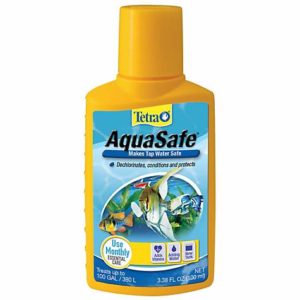
The Tetra AquaSafe Water Conditioner will remove chlorine, chloramines and heavy metals. It also has the ability to enhance the natural slime coat of your fish. This water conditioner also contains natural bio-polymers. These bio-polymers will help the beneficial bacteria colonize the inside of the fish tank and the filter.
Seachem Prime Review
Seachem Prime will remove chlorine, chloramines, ammonia while also detoxifying nitrite and nitrate. This is the water conditioner I use and has been a mainstay in my aquarium maintenance routine for years. I especially like Seachem Prime’s ability to detoxify nitrite and nitrate. While some other water conditioners lock up ammonia, they may still leave nitrite and nitrate behind. By handling most of the toxins in a tank, Seachem Prime is one of the best ways to ensure the health of your fish.
Fluval Water Conditioner Review
Fluval Water Conditioner will neutralize chlorine, chloramines and heavy metals. It has no other added chemicals to remove other substances. If you are looking to start a new tank or only need to remove chlorine and chloramines this water conditioner will serve you well.
ATM Paradigm All Natural Vitamin C Water Conditioner for Aquariums
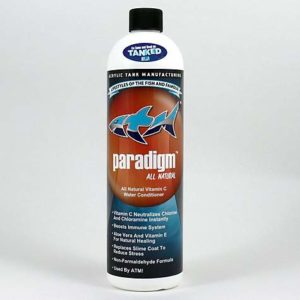
The ATM Paradigm All Natural Vitamin C Water Conditioner is one of the few products available that use Vitamin C to remove chlorine and chloramine. It also contains Aloe Vera to help promote a healthy slime coat on your fish. If you want a natural way to remove chlorine from your water this is one of the best products you can buy.
And just as an aside if your a big fan of the show Tanked on Animal Planet, this product is part of their extensive line of water conditioners.
Imagitarium Water Conditioner, 16oz
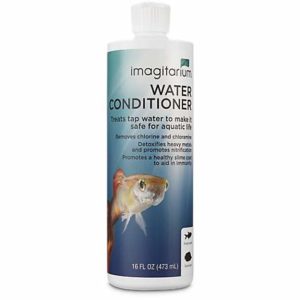
The Imagitarium Water Conditioner will remove chlorine and chloramines while also detoxifying heavy metals. The Imagitarium Water Conditioner also promotes the growth of a healthy slime coat.

